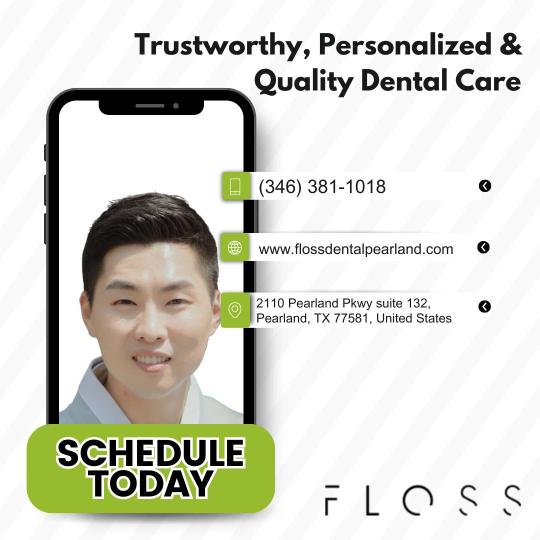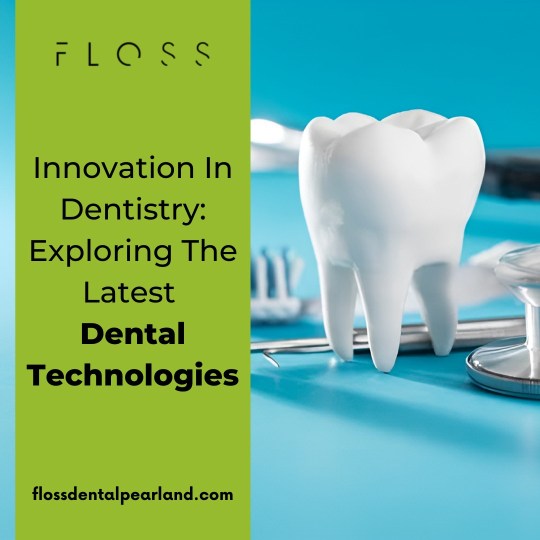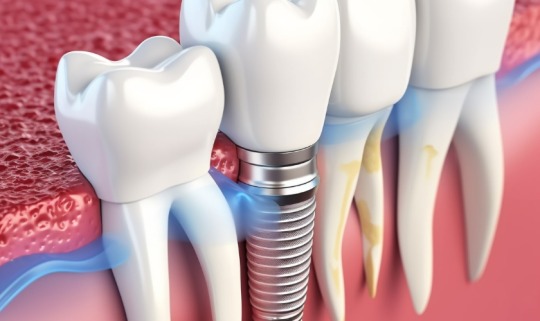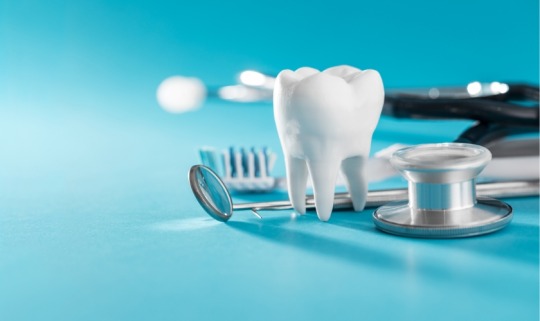#dentistinpearland
Text
#dentist in pearland#pearland dentist#dentist near me#dentist pearland#dental office in pearland#pearlanddentist#pediatric dentist pearland#dentistinpearland#dentists
0 notes
Text

A Guide to Festive Oral Wellness
#dentist in pearland#pearland dentist#dentist near me#dentist pearland#dental office in pearland#pearlanddentist#pediatric dentist pearland#dentistinpearland#dentists#cosmeticdentistpearland
0 notes
Text
Discover the top local dentist in Pearland, TX for exceptional dental care and a radiant smile.

#dentist in pearland#pearland dentist#dentist near me#dentist pearland#dental office in pearland#dentists#dentistinpearland#pearlanddentist#pediatric dentist pearland#cosmeticdentistpearland
0 notes
Text

Embark on a journey to find your ideal local dentist in Pearland, TX. Prioritize your oral health by scheduling an appointment today, and let us guide you towards a brighter, more confident smile!
#dentist in pearland#pearland dentist#dentist near me#dentist pearland#pearlanddentist#dental office in pearland#pediatric dentist pearland#dentistinpearland#dentists#cosmeticdentistpearland
0 notes
Text
#dentist in pearland#pearland dentist#dentist near me#dentist pearland#pearlanddentist#dental office in pearland#pediatric dentist pearland#dentistinpearland#dentists#cosmeticdentistpearland
0 notes
Text

#dentist in pearland#pearland dentist#dentist pearland#dentist near me#dental office in pearland#pearlanddentist#pediatric dentist pearland#dentistinpearland#dentists#cosmeticdentistpearland
1 note
·
View note
Text

#dentist in pearland#pearland dentist#dentist near me#dentist pearland#pearlanddentist#dental office in pearland#dentistinpearland#dentists#cosmeticdentistpearland#pediatric dentist pearland
0 notes
Text
#dentist in pearland#pearland dentist#dentist pearland#dentistinpearland#pediatric dentist pearland#pearlanddentist#dental office in pearland
0 notes
Text
#dentist in pearland#dentist near me#pearland dentist#dental office in pearland#dentist pearland#pearlanddentist#pediatric dentist pearland#dentistinpearland#dentists#cosmeticdentistpearland
0 notes
Text
#dentist in pearland#dentist near me#pearland dentist#dentist pearland#dental office in pearland#cosmeticdentistpearland#dentists#pediatric dentist pearland#pearlanddentist#dentistinpearland
0 notes
Text
What are the 3 stages of dental implants?

Embarking on the journey towards dental implants involves a meticulous process that spans three distinct stages. In this comprehensive guide, we, at FLOSS Dental Pearland, unravel the intricacies of each phase, providing you with an insightful understanding of what to expect on your path to a confident, radiant smile.
Stage 1: Consultation and Assessment
At the inception of your dental implant journey, the initial stage is dedicated to a thorough consultation and assessment. This stage is pivotal, serving as the foundation upon which the entire process rests. During this step, our team of seasoned professionals, including experienced dentists and oral surgeons, will conduct a comprehensive examination of your oral health.
Evaluation of Oral Health
The first aspect of the consultation involves a meticulous evaluation of your oral health. This includes a thorough examination of your teeth, gums, and overall dental structure. Cutting-edge diagnostic tools, such as digital X-rays, enable us to garner a detailed understanding of your dental condition.
Customized Treatment Plan
Based on the evaluation, our expert team will craft a customized treatment plan tailored to your specific needs. This plan will outline the proposed course of action, addressing any pre-existing dental issues and formulating a roadmap for the subsequent stages of the dental implant procedure.
Stage 2: Implant Placement
With the foundation laid during the consultation stage, the journey progresses to the second phase – Implant Placement. This stage involves the surgical aspect of dental implantation, where the titanium implants are strategically positioned in the jawbone.
Surgical Precision
Our skilled oral surgeons, equipped with advanced techniques and technology, ensure surgical precision during the implant placement process. The implants, designed to mimic natural tooth roots, are strategically inserted into the jawbone, providing a sturdy and durable foundation for the prosthetic teeth.
Osseointegration: Fusion with the Jawbone
Post-implant placement, a critical process known as osseointegration takes center stage. This is the biological marvel where the implants fuse with the jawbone, creating a robust and stable anchor for the artificial teeth. Patience is key during this phase, as it typically takes a few months for complete osseointegration to occur.
Stage 3: Restoration – Crafting Your Perfect Smile
The final stage of the dental implant journey revolves around the restoration process, where the personalized prosthesis is affixed to the integrated implants. This phase marks the culmination of your transformation, as your new teeth are meticulously crafted to seamlessly blend with your natural dentition.
Customized Prosthesis
Our commitment to delivering excellence extends to the crafting of the prosthesis. Utilizing state-of-the-art materials and technologies, our skilled technicians design a customized crown or bridge that mirrors the shape, size, and color of your natural teeth. This ensures a harmonious blend, both aesthetically and functionally.
Final Placement and Follow-up
Once the prosthesis is ready, the final placement occurs with precision. Our team ensures a snug fit, optimizing comfort and functionality. Post-restoration, we conduct thorough follow-up examinations to guarantee the long-term success of the procedure, providing you with the confidence to showcase your revitalized smile.
In conclusion, the three stages of dental implants – Consultation and Assessment, Implant Placement, and Restoration – collectively pave the way for a transformative dental experience. At FLOSS Dental Pearland, we prioritize precision, personalized care, and the artistry of dental restoration, ensuring that your journey to a confident smile is unparalleled.
#dentist in pearland#dentist near me#pearland dentist#dental office in pearland#pearlanddentist#dentists#dentistinpearland#dentist pearland#pediatric dentist pearland
1 note
·
View note
Text
Is A Dental Deep Cleaning Ever Really Necessary?

When it comes to dental care, questions often arise about the need for certain procedures, and one of the common queries is whether a dental deep cleaning is ever really necessary. In this comprehensive guide, we will explore the intricacies of dental deep cleaning, its significance, and when it may be required. Our aim is to provide you with a detailed understanding of this procedure, enabling you to make informed decisions about your oral health.
Understanding Dental Deep Cleaning
To comprehend the necessity of a dental deep cleaning, it's essential to first understand what this procedure entails. Dental deep cleaning, also known as scaling and root planing, is a therapeutic dental treatment that goes beyond a routine dental cleaning.
This procedure is typically recommended for individuals who exhibit signs of advanced gum disease, known as periodontitis. Periodontitis can lead to gum inflammation, pockets between the teeth and gums, and potential tooth and bone loss. Dental deep cleaning focuses on removing accumulated plaque and tartar both above and below the gumline, targeting areas that regular cleaning may not reach.
Signs that Might Indicate the Need for Dental Deep Cleaning
While a dental deep cleaning is not a routine dental procedure, there are specific signs and symptoms that may indicate its necessity. These include:
Gum Inflammation
Persistent gum inflammation, characterized by redness, swelling, and tenderness, can be an early sign of gum disease. If left unaddressed, it can progress to periodontitis, necessitating deep cleaning.
Deep Gum Pockets
Dentists measure the depth of the pockets between your gums and teeth. If these pockets are deeper than normal, it can indicate gum disease and the need for deep cleaning.
Bleeding Gums
Gums that bleed during brushing or flossing may be a sign of gum disease. It's essential to consult your dentist if this occurs regularly.
Tooth Mobility
Tooth mobility can be a sign of advanced gum disease. Dental deep cleaning may help prevent further tooth and bone loss.
Benefits of Dental Deep Cleaning
Dental deep cleaning offers several advantages, including:
Halting Gum Disease Progression: It can prevent gum disease from worsening, potentially saving your teeth and supporting oral health.
Preventing Tooth Loss: By addressing the root cause of gum disease, it helps prevent tooth loss.
Improved Oral Health: Deep cleaning can lead to healthier gums and fresher breath.
When Might Dental Deep Cleaning Not Be Necessary?
Not everyone requires a dental deep cleaning. It is typically recommended when signs of gum disease are evident. Routine dental cleanings and proper oral hygiene practices are usually sufficient for maintaining oral health in the absence of gum disease.
Consult Your Dentist
Ultimately, the decision on whether a dental deep cleaning is necessary should be made in consultation with your dentist or periodontist. They will assess your oral health, discuss your symptoms, and recommend the most appropriate treatment based on your specific needs.
In conclusion, a dental deep cleaning is necessary when gum disease has advanced to a certain stage. It can help prevent further oral health complications and preserve your teeth. If you suspect you may need a deep cleaning, it's vital to consult with your dentist for a thorough evaluation and personalized guidance.
#dentist in pearland#dentist near me#dentist pearland#pearland dentist#pearlanddentist#dental office in pearland#pediatric dentist pearland#dentistinpearland#dentists#cosmeticdentistpearland
0 notes
Text
How Long Does It Take To Heal After Getting Dental Implants?

When it comes to dental implants, one of the most common questions that patients have is, "How long does it take to heal after getting dental implants?" It's a crucial concern for anyone considering this transformative procedure to restore their smile. In this comprehensive guide, we'll delve into the intricacies of the healing process after getting dental implants.
Understanding the Dental Implant Healing Period
Dental implants in Pearland, TX are a remarkable solution for replacing missing teeth. They offer unparalleled stability, functionality, and a natural appearance. However, the process involves a few stages, and healing is a critical part of it.
Stage 1: Immediate Post-Operative Healing
Right after your dental implant surgery, the immediate focus is on healing the surgical site. This phase typically lasts for about 7-10 days. During this time, you might experience some discomfort, swelling, and minor bleeding. These are all typical side effects, and your oral surgeon will provide you with guidelines on managing them.
Stage 2: Osseointegration - The Key to Success
Osseointegration is the magical process where the dental implant fuses with your jawbone. This is the stage that ensures the long-term stability of your dental implant. It's a crucial factor in the healing timeline, as it can take anywhere from 3 to 6 months. While it might seem lengthy, this phase is vital for the implant's success.
Stage 3: Prosthesis Placement
Once osseointegration is complete, your oral surgeon will attach the abutment and crown to the implant. This marks the final stage of the healing process. It usually takes a few weeks for your gums and soft tissues to heal around the abutment. After this, you'll have a fully functional and aesthetically pleasing dental implant.
Factors Influencing Healing Time
The duration of healing after getting dental implants in Pearland, TX can vary from person to person. Several factors influence how long the healing process takes:
1. Overall Health
Your general health plays a significant role in the healing process. A healthy lifestyle, including a balanced diet and avoiding smoking, can promote quicker healing.
2. Oral Hygiene
Maintaining excellent oral hygiene is crucial. Keeping the surgical site clean and following your dentist's post-operative care instructions can expedite healing.
3. Bone Quality
The density and quality of your jawbone can affect healing time. In some cases, additional procedures like bone grafting may be necessary to enhance the bone's ability to support the implant.
4. Implant Location
The location of the implant in your mouth can also impact healing time. Implants in areas with high pressure and strain may take longer to heal.
Signs of Proper Healing
Knowing what to look for during the healing process is essential. If everything is progressing as it should, you can expect:
Gradual reduction in swelling and discomfort.
Properly healing incision sites.
Stable implant mobility.
No persistent pain or infection.
Conclusion
In summary, the healing time after getting dental implants is a multi-stage process. From the immediate post-operative healing to the critical osseointegration phase, each step is integral to the success of your dental implant. Factors such as overall health, oral hygiene, bone quality, and implant location all contribute to the healing timeline.
Remember that patience is key, and your dentist in Pearland, TX will closely monitor your progress throughout the journey. With proper care and follow-up appointments, you'll soon enjoy a fully restored, confident smile that will last a lifetime.
#dentist in pearland#dentist near me#dentist pearland#pearland dentist#dental office in pearland#pearlanddentist#pediatric dentist pearland#dentistinpearland#dentists#cosmeticdentistpearland
0 notes
Text
Unveiling the Dental Truth: Which Tooth Extraction Is The Most Painful?

Dental extractions are a common and necessary procedure to address various oral health issues, but they often raise concerns about pain and discomfort. Many people wonder which type of tooth extraction is the most painful, and in this comprehensive guide, we aim to provide you with the insights you need to make an informed decision regarding dental extractions.
Types of Tooth Extractions
To understand the pain associated with tooth extractions, it's essential to know the different types of extractions:
1. Simple Extractions
Simple extractions are relatively straightforward and involve the removal of a visible tooth that has erupted through the gum. These are typically performed under local anesthesia and are generally less painful than surgical extractions.
2. Surgical Extractions
Surgical extractions are more complex and involve the removal of teeth that are not easily accessible or those that haven't fully erupted. Wisdom teeth extractions often fall into this category. While surgical extractions may be more involved, the level of pain experienced can vary depending on factors like the tooth's position and the individual's pain threshold.
3. Wisdom Tooth Extractions
Wisdom tooth extractions are often a topic of concern. These molars at the back of the mouth typically emerge in late adolescence or early adulthood and can sometimes lead to pain, infection, or misalignment of other teeth. Wisdom tooth extractions may be perceived as more painful due to their location and the potential for complications.
Factors Influencing Pain
Several factors can influence the level of pain experienced during a tooth extraction:
1. Anesthesia
The use of local anesthesia significantly reduces pain during extractions. Dentists will ensure that the area is fully numbed before the procedure, minimizing discomfort.
2. Tooth Location
The location of the tooth plays a vital role in the pain experienced during extraction. Teeth that are deeply rooted or impacted can result in a more complex procedure and potentially more discomfort.
3. Individual Pain Tolerance
Pain is a subjective experience, and an individual's pain tolerance varies. Some people may find certain extractions more painful than others based on their unique pain threshold.
Managing Pain After Extraction
While some pain and discomfort are normal after a tooth extraction, there are steps you can take to manage and alleviate it:
1. Medication
Dentists often prescribe pain-relief medication to manage post-extraction discomfort. Following your dentist's recommendations is crucial for pain management.
2. Ice Packs
Applying ice packs to the affected area can help reduce swelling and alleviate pain.
3. Rest
Taking it easy and allowing your body to heal is essential. Avoid strenuous activities and rest as needed.
4. Proper Oral Care
Follow your dentist's instructions on oral hygiene after an extraction to prevent infection and minimize discomfort.
In Conclusion
The question of which tooth extraction is the most painful is not easily answered, as pain perception varies among individuals and depends on various factors. The type of extraction, the use of anesthesia, the tooth's location, and an individual's pain tolerance all play a role in determining the level of pain experienced.
It's important to remember that while some discomfort is expected after a tooth extraction, dentists are skilled in minimizing pain and ensuring a smooth recovery. If you have concerns about pain or the need for a tooth extraction, consult with your dentist, who can provide personalized guidance and support.
#dentist in pearland#pearland dentist#dentist near me#pearlanddentist#dental office in pearland#dentist pearland#dentistinpearland#dentists#pediatric dentist pearland#cosmeticdentistpearland
1 note
·
View note
Text
Is it part of orthodontic care to extract wisdom teeth?

In the realm of orthodontic care, the question of whether extracting wisdom teeth is a standard practice is a topic of interest and often confusion. Wisdom teeth, also known as third molars, typically emerge in late adolescence or early adulthood. These teeth can be a source of concern due to their potential impact on dental alignment and overall oral health. In this comprehensive article, we will address the role of wisdom teeth in orthodontic care, the reasons behind their extraction, and the considerations that come into play when making this decision.
The Role of Wisdom Teeth
Wisdom teeth, or third molars, are the final set of molars that typically emerge in the late teens or early twenties. These teeth were once essential for our ancestors who had a diet that required more chewing power. However, with the evolution of our diet and oral health practices, these teeth have become less necessary. As a result, not everyone develops wisdom teeth, and in many cases, they may not fully erupt.
Potential Issues with Wisdom Teeth
When wisdom teeth do emerge, they can lead to various dental concerns, including:
1. Crowding: Wisdom teeth can cause overcrowding in the mouth. This can disrupt the alignment of existing teeth, leading to orthodontic issues that may require correction.
2. Impaction: Wisdom teeth often don't have enough space to emerge properly, causing them to become impacted. Impacted wisdom teeth can lead to pain, infection, and damage to adjacent teeth.
3. Difficulty in Cleaning: Due to their location at the back of the mouth, wisdom teeth can be challenging to clean effectively. This makes them more susceptible to decay and gum disease.
4. Alignment Issues: Wisdom teeth can exert pressure on neighboring teeth, pushing them out of alignment and affecting the results of orthodontic treatments.
Orthodontic Considerations
In orthodontic care, the presence of wisdom teeth is carefully evaluated. Orthodontists in Pearland, TX consider several factors when deciding whether or not to extract these teeth:
1. Alignment: If wisdom teeth are likely to disrupt the alignment of existing teeth or compromise the results of orthodontic treatment, extraction may be recommended.
2. Impaction: Impacted wisdom teeth are often extracted to prevent pain, infection, and damage to adjacent teeth.
3. Oral Health: The overall impact of wisdom teeth on oral health, including the risk of decay and gum disease, is considered.
4. Individual Cases: Each patient is unique, and decisions about wisdom tooth extraction are made on a case-by-case basis. Not everyone will require wisdom tooth removal as part of their orthodontic care.
The Decision to Extract Wisdom Teeth
Ultimately, the decision to extract wisdom teeth as part of orthodontic care depends on individual circumstances. It is essential to consult with an orthodontist who can assess your specific case, taking into account your oral health, the alignment of your teeth, and the potential impact of wisdom teeth on your overall orthodontic treatment.
In conclusion, while the extraction of wisdom teeth can be a part of orthodontic care, it is not a universal practice. The decision is made based on individual factors and the potential impact of these teeth on alignment and oral health. If you are considering orthodontic treatment or have concerns about your wisdom teeth, consult with an orthodontist who can provide personalized guidance and recommendations.
#dentist pearland#pearlanddentist#dental office in pearland#dentist in pearland#dentist near me#pediatric dentist pearland#dentistinpearland#cosmeticdentistpearland#dentists#pearland dentist
0 notes
Text
Smile Brighter: The Future of Dentistry Unveiled

In recent times, the landscape of dentistry has undergone a remarkable metamorphosis, all courtesy of groundbreaking innovations and state-of-the-art technologies. At Floss Dental Pearland, we are brimming with enthusiasm as we embark on a journey to dissect these extraordinary advancements that are, quite literally, forging the path ahead in the realm of oral healthcare.
The Digital Smile Transformation: A Glimpse into Tomorrow
Picture a world where dental procedures transcend the boundaries of pain, offering levels of precision that are nothing short of breathtaking, and delivering results that mirror nature's own handiwork. This is the awe-inspiring realm of digital smile transformations, a paradigm-shifting concept that seamlessly marries the worlds of digital imaging, 3D printing, and computer-aided design. Now, dentists wield the power to curate treatment plans, bespoke and finely calibrated to harmonize perfectly with the distinctive needs of each patient. The result? Flawless smiles that were once confined to the realms of imagination.
The Dawn of 3D Printing in Dentistry
Among the myriad of technological marvels reshaping the dental landscape, perhaps none are as striking as the integration of 3D printing. This groundbreaking technology has ushered in a new era, streamlining the creation of dental implants, crowns, bridges, and even orthodontic devices. 3D printing isn't just about efficiency; it's about precision of the highest order. The outcome? Dental solutions that are not only impeccably tailored but also endowed with an enduring quality that defies expectations.
AI: The Architect of Dental Transformation
Artificial Intelligence (AI) has emerged as a veritable game-changer across a multitude of industries, and the world of dentistry is no exception. AI-driven diagnostic tools are now capable of scrutinizing dental images and patient records with unparalleled acumen. The result? Dentists can uncover issues in their infancy, elevating the standard of preventive care while ensuring swifter, more precise diagnoses that ultimately translate into improved patient outcomes.
Teledentistry: Bridging the Chasms in Oral Healthcare
In an age where convenience reigns supreme, teledentistry has surged to the forefront as a groundbreaking solution. It beckons patients to consult with dentists from remote corners of the globe, extending a hand of guidance, offering recommendations, and even facilitating preliminary assessments. This innovation has proven to be an invaluable asset, particularly for those residing in far-flung regions or grappling with limited access to traditional dental care.
Laser Dentistry: Pioneering Minimally Invasive Procedures
Bid farewell to the bygone era of agonizing dental procedures and protracted recoveries. Laser dentistry has orchestrated a paradigm shift, introducing a new era characterized by minimally invasive treatments. The laser's touch is now enlisted in a multitude of procedures, ranging from cavity detection to gum disease treatment and teeth whitening. The result? Reduced discomfort and expedited healing processes.
Bioactive Materials: A Revolutionary Approach to Dental Restorations
Traditional dental materials have ceded the spotlight to bioactive counterparts that go beyond mere restoration. These innovative materials actively champion the remineralization of teeth, restoring dental health while simultaneously fortifying teeth, rendering dental restorations both enduring and resilient.
Embracing Eco-Friendly Dentistry
In a world increasingly attuned to ecological concerns, dentistry is forging a path toward sustainability. From biodegradable dental floss to the incorporation of recyclable materials within dental practices, the industry is taking resolute strides to reduce its environmental footprint, contributing to a healthier planet.
The Prognosis: A Bright Future
As we cast our gaze toward the horizon, one thing becomes abundantly clear - the future of dentistry gleams with an unprecedented luminosity. Innovations such as digital smile transformations, 3D printing, AI integration, and eco-conscious practices are steering the dental industry toward a transformative era. At Floss Dental Pearland, our unwavering commitment lies in keeping you thoroughly apprised of these extraordinary developments that are poised to redefine our perception of oral healthcare.
In conclusion, the vista of dentistry's future is bedecked with promise, ushering in treatments that promise enhanced comfort, efficiency, and effectiveness for patients. Stay tuned for a continuous stream of updates and profound insights into the thrilling domain of dental innovation.
#dentist in pearland#dentist near me#dentist pearland#pearlanddentist#dental office in pearland#pearland dentist#pediatric dentist pearland#dentists#dentistinpearland#cosmeticdentistpearland
0 notes